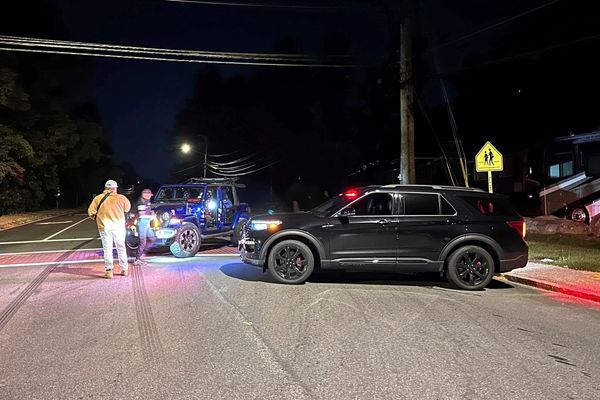
"Ask them to repeat that [name]," Max Verstappen chuckled when Motorsport.com asked the Dutchman and fellow top three qualifiers Lando Norris and George Russell about why Zandvoort's so-called Hugenholtzbocht was causing so many headaches across the weekend.
Verstappen's request prompted lacklustre efforts by his colleagues. However, drivers didn't just trip up over the Dutch pronunciation of Turn 3's official name, but also over its unique profile.
In a dry second free practice, Oscar Piastri crashed his McLaren, with AlphaTauri's Daniel Ricciardo also following his fellow Australian into the wall while trying to take avoiding action, Ricciardo suffering a broken hand in the process. In Saturday's wet third practice session, Haas' Kevin Magnussen also smacked the wall on corner exit.
Home hero Verstappen narrowly avoided a similar fate in the corner named after John Hugenholtz, the Dutch circuit designer who drew Suzuka, Zolder and Jarama amongst others.
There were also some Turn 3 incidents in Zandvoort's previous two editions, most notably Ferrari man Carlos Sainz's sizeable shunt in 2021's FP3.

Initially, the Hugenholtzbocht was perhaps overshadowed by the Daytona-like banking of the final Arie Luyendyk corner, an easy flat that has since been cleared for DRS use.
But several factors could explain why the rollercoaster-like left-hander of Turn 3, which was re-profiled for F1's return with a variable six to 18-degree banking to allow for different lines, caused such headaches and is now arguably the real standout feature of the Dutch GP venue.
"Honestly, I don't know why I went off," Verstappen said about his FP3 moment after taking pole on Saturday. "I wasn't even pushing. I just suddenly lost the car. That last bit of the banking was extremely slippery for whatever reason, if it was rubber or dirt laying around.
"The line on the exit was a little bit different to the dry for a long time. I think just that the new tarmac was very slippery. And maybe with the banking, it made it a bit more tricky."
Russell thought that the corner's new tarmac turned it into a "bowling alley" in the wet, while Norris added that the corner's impressive banking makes it very inviting for drivers to just send it.
"You feel like you can attack it so much but as you kind of hit the dip a lot of things can happen," the McLaren man said. "The grip feels good, but then almost gets a lot worse the closer to the exit you get. You feel like you can almost overdo it very easily. It's a good challenge in both conditions, but even more so in the rain."

When asked by Motorsport.com to weigh in on the factors that led to his costly FP2 crash when the track was still dry, Piastri said: "I think just the way you have to attack the banking, obviously it's not the smoothest transition in the world. And with such kind of strange behaviour on the tyres on the car, it reacts a little bit differently sometimes to what you would normally expect.
"Obviously, the wall is a metre to the right so if you get it wrong - as I proved - that ends badly. You kind of hope the grip is there when you get into the banking. maybe I was a bit ambitious with that. But yeah, it's definitely a tricky one."
Haas's Nico Hulkenberg echoed Piastri's sentiments and said the sudden direction change through Turn 2 only adds to the challenge as it unsettles the car into the entry of the banking.
"You come in over the crest of turn two, the car becomes kind of light as you go over the crest, then you go into some compression.

"And when you enter the banking, where the warp of the circuit hits the car, I guess the aerodynamics don't like that too much and you lose grip for a split second. That feels quite sketchy from inside the car and makes this corner quite challenging.
"On top of that, it turned out that the best line is already very high up, so very close to the barrier already. So, if things go wrong, you have almost no time to react or to save it."
The gradual slope was specifically designed to allow for multiple lines, but it soon became clear staying high up around the outside is the preferred racing line, even if some drivers experimented with alternative lines in the wet as the generously painted on-track branding made the circuit edge even more slippery.
But it still makes for an awkward corner for the start of the race, where cars do tend to run side-by-side on the snaking flat-out run towards Turn 7 or Scheivlak, another tricky tongue-twister for mere mortals.
"I think the first lap is less bad because people take more margin, you don't go quite as fast through it," said Hulkenberg, who starts from 14th. "We've seen obviously different kinds of combinations, some go low, some go high. Let's see what happens."
Additional reporting by Ronald Vording







